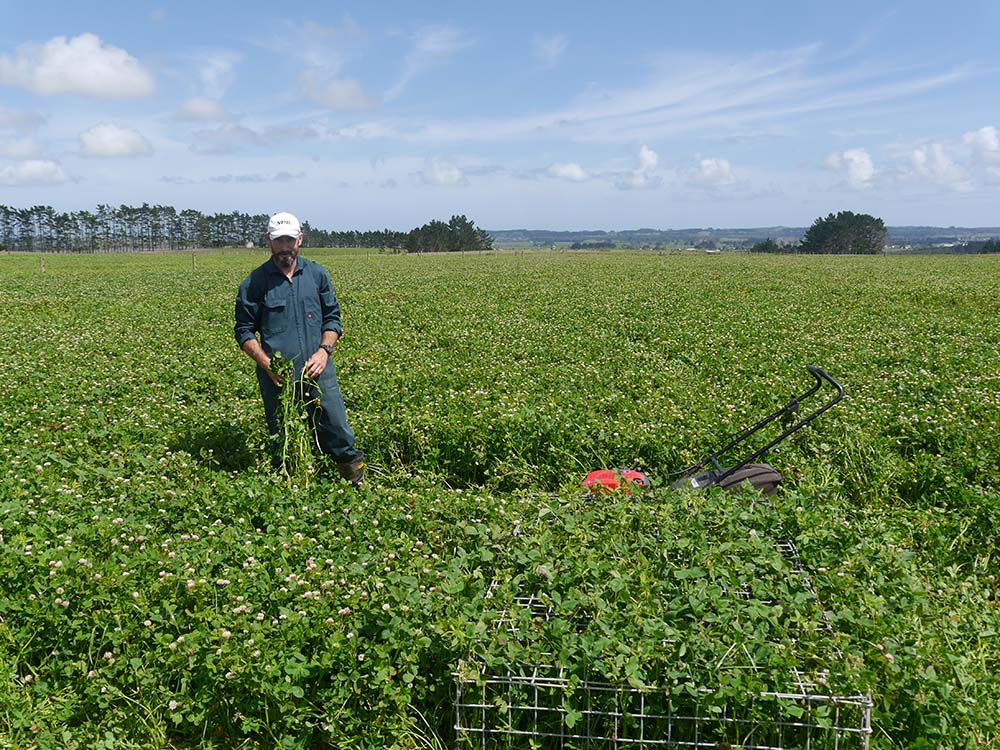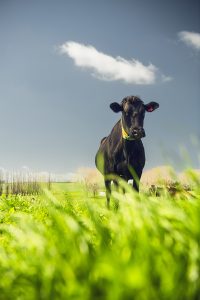The Northland Diversified Forages Project, co-funded by the T.R. Ellett Agricultural Trust, is helping arm Northland farmers with the tools they need to make decisions around pasture renewal, particularly if looking for an alternative to perennial ryegrass.
The first seed was sown in 2016 and the project ran across multiple sites until June 2021, providing monitoring and extension activities, including farmer focus groups and field days, as well as a quarterly newsletter.
Gavin Ussher was one of those who put the application together, gaining funding under the MPI Sustainable Farming Fund, along with funding from a number of other partners, including the Trust. Gavin supported the project and undertook the reporting and extension activities.

The idea for the project was borne from a dissatisfaction with perennial ryegrass in Northland and the Trust had provided funding for an earlier three-year project looking at the sustainability of perennial ryegrass and tall fescue on a sheep and beef farm and a dairy farm in the region.
“Perennial ryegrass, if it persists for two years, is doing pretty well. A large part was looking at the endophyte status. The result was very positive for the endophyte, it wasn’t the endophyte bombing out, the endophyte was doing the job but the climate and other stresses on the grass were too great to allow them to flourish beyond two to three years. These data were pretty useful,” Gavin explains.
Following on from that trial, they were challenged about what had been trialled in the region and the use of annual clovers, which had not been widely used in Northland to that point. A second project was undertaken, for two years, looking at how competitive annual clover was, and a comparison with ryegrass using red and white clover.
“We wanted to see if we could get better production with annual clover in conjunction with a typical seed mix. Enough promise was shown by two annual clovers especially, and we wanted to build on that. Under our climatic conditions, white clover and perennial ryegrass haven’t been doing the job.”
Gavin says they found red clover could be very productive in Northland, with good soil moisture in November/December through to early January. But annual clovers were found to grow very well through July to November and into early December, as long as there was good plant population.
“We had two years of on-farm monitoring and we wanted to take it a major step further by sowing annual clovers and comparing perennial ryegrass, tall fescue and cocksfoot and a mix of red and white clover, as well as herbs like plantain and chicory.”

What they discovered was that perennial ryegrass didn’t stack up well. Tall fescue or cocksfoot gave an extra two to three years of production when compared to the perennial ryegrass.
“We had two sites with closed plots and perennial ryegrass versus tall fescue versus cocksfoot with a standard white clover mix and followed them over four years. We found, especially in the heavier clay soils, an extra 12 months production or 20-25% extra growth from tall fescue and cocksfoot.”
Gavin explains the project demonstrated there are other options in the medium and long-term, and while tall fescue or cocksfoot won’t give you 10 to 15 years, an extra two to three years of productivity does add significantly to the bottom line.
Results varied depending on site and many other factors like soil type, soil moisture and soil fertility come into play.
“How long is a piece of string and how long have you got to talk about it, because of the variations between farms. But the basic recommendation would be you cannot be putting perennial ryegrass in into the most harsh conditions in Northland, and if you’re getting two years out of it, you’re doing well. Cocksfoot or tall fescue will give you an extra two to three years and that adds to the financial bottom line of the farm.”
Gavin says lucerne did put its hand up, but only on the free draining soils. One of the initial activities was to look at a wide range of species, particularly legumes, but it came back to red and white clover. It was hard to go past tall fescue or cocksfoot as the grass component. As an average over the project sites, the addition of the productive annual clovers resulted in a 2-3 tonne increase.
Funding from the T.R. Ellett Agricultural trust is absolutely key to projects like this, Gavin says. “It’s very important. One of the reasons this project got the yes from MPI was the fact we had such a broad base of co-funders. They see that as a good indicator that industry thinks it is a good idea and that it has support from industry and agri-business leaders.”
Projects like this are important, as they spread the risk, which might otherwise be taken on by one forward thinking farmer alone.
“If an individual farmer does it and it fails, the financial cost may be considerably larger. It reduces the risk to the farmer. Additionally, having researchers involved gives the ability to identify problems. For example, with annual clovers, parasitic nematodes are a problem in Northland. This was discovered through monitoring. A farmer on his own may work with his fertiliser and seed reps or a consultant, but it’s considerably easier to share the load.”
With the looming challenges posed by climate change it is critical to evaluate the plants available to farmers and their ability to do the job, in that particular region. Identifying plants that are able to persist longer can add to the financial viability of a farming business.
If farmers are doing well, that has flow on effects for the wider community and rural service businesses.
“Being involved with other farmers who are going through a similar thing, through field days and focus groups, means you are able to share closely the negatives, and the positives, so it’s a win for the whole system.”
More information on the Northland Diversified Forages Trial can be found here.
